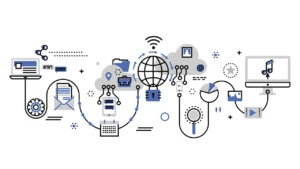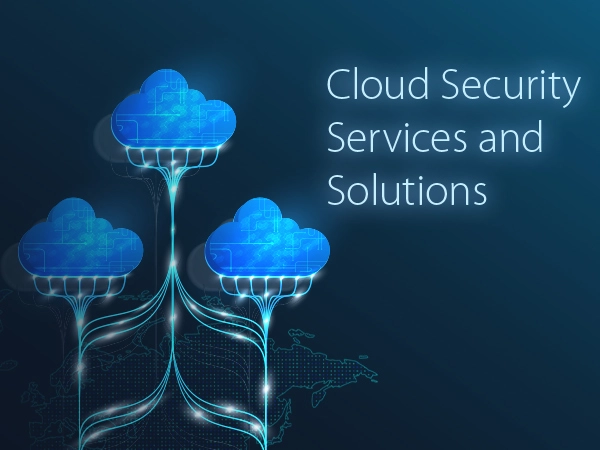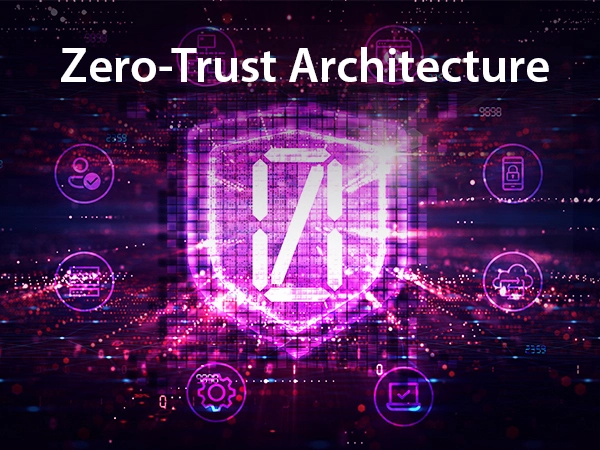Index
- Introduction
- Cloud Computing
- Types of Cloud Computing
- Overview of Cloud Computing Architecture
- Types of Cloud Computing Architectures
- Ensuring Cloud Computing Security
- Key Components of Cloud Security
- Benefits of Cloud Computing
- Challenges of Cloud Computing for Enterprise
- Strategies for mitigating risks and challenges of Cloud Computing
- Cloud Computing Security
- Cloud Use Cases
- What cloud-computing services are available?
- What is multi-cloud computing?
- Impact of cloud-computing on Business
- Future of Cloud Computing
- Conclusion
- FAQs
Cloud computing is a game-changing technology paradigm powering digital transformation across sectors. Cloud adoption continues accelerating, given lower costs, no hardware dependencies, and usage-based pricing driving innovations. This article provides a comprehensive guide to various facets of cloud services and deployment models fundamentally reshaping technology landscapes – their types, architectural underpinnings, vital security considerations, and evolution to becoming the default choice for forward-looking enterprises.
Cloud Computing
Cloud computing democratizes sophisticated technology access by allowing dynamic utilization of computing infrastructure, platforms and software over the internet as-a-service without upfront investments. Resources are pooled securely, enabling sharing economies. Scalable usage aligns costs to actual consumption rather than guesstimated overprovisioning, easing cash flows for pay-per-use business agility.
Types of Cloud Computing
Infrastructure as a Service (IaaS)
The IaaS or Infrastructure-as-a-Service cloud option essentially allows users to rent fundamental computing facilities like servers, databases, storage space, and utilities over the internet.
Platform as a Service (PaaS)
The Platform-as-a-Service cloud option goes a step beyond basic infrastructure. Here the providers essentially offer ready toolkits and environments for developers to code, test and host applications without configuring underlying technology stacks first.
Software as a Service (SaaS)
SaaS delivers complete, ready-to-use cloud applications to users on a subscription basis accessible over the internet. As vendors themselves manage it, companies don’t need to provision any infrastructure. Some examples are Customer Relationship Management, Office Productivity software, and Finance management apps. Salesforce CRM, Microsoft 365, and QuickBooks are popular SaaS options adding agility for businesses.
Overview of Cloud Computing Architecture
Cloud architecture refers to the components and design that enable the delivery of on-demand computing services over the Internet and support interactivity for users to manage capabilities. Rather than siloed on-premise infrastructure, cloud adopts a shared model allowing virtualization and seamless scaling of technology resources. The modular structure typically consists of front-end platforms and apps allowing user management plus self-service control of cloud services for workload management.
Types of Cloud Computing Architectures
1. Public Cloud
Public cloud refers to computing services hosted by third-party providers on shared infrastructure accessible by public internet connections. Resources like servers and storage are owned and operated by the cloud provider in their data centers, to which customers subscribe to services based on requirements. Offerings may be free or usage-based pricing models allowing highly flexible pay-per-use scalability for businesses.
2. Private Cloud
A private cloud denotes a dedicated cloud computing environment provisioned for exclusive use by a single organization from its own data center or an outsourced facility. While more secure, it involves considerable capital expenditure and IT skills for setup and maintenance. Larger enterprises may adopt a private cloud to host sensitive applications, comply with data regulations, or seamlessly extend legacy systems.
3. Hybrid Cloud
Hybrid combines public and private cloud adoption based on application criticality and economic considerations. Core business systems and proprietary applications continue in private cloud or on-premise servers. Additional workload overflow and general productivity infrastructure shifts to the public cloud, providing better economies of scale with no uptime risks, making the best of both models.
Ensuring Cloud Computing Security
As cloud adoption grows exponentially, security considerations become paramount given enterprises host sensitive data and critical systems on virtualized infrastructure outside direct ownership. Secure cloud transforms the possibility of catastrophic data theft or privacy violations into sustained trust and accelerated innovations.
Legitimate user concerns exist on unauthorized data access in multi-tenant models, account hijacking risks with phishing campaigns, or vulnerabilities during migrations opening attack doors. Addressing such requires shared vigilance on aspects like stringent access controls, data encryption, identity management, and layered defense, deploying robust tools, policies, and standards guiding cloud use.
Moreover, as custodians of massive user data pools, leading cloud providers invest significantly in state-of-the-art security frameworks performed by experienced teams. Innovations like the use of AI for threat detection, automated security assessments, and compliance monitoring have emerged across vendors like AWS, Azure, and Google Cloud. Providers publishing proof certifications against standards like ISO27001 inspires customer confidence through transparency on safety measures implemented.
Key Components of Cloud Security
· Identity and Access Management (IAM)
IAM governs access controls for cloud environments by ensuring only authorized users have permissible privileges through single sign-on, multi-factor authentication, and access tiering strategies that balance productivity and risks.
· Data Encryption
Encrypting data, whether in transit networks or stored systems using the latest cipher techniques, ensures it stays inaccessible for external parties lacking decryption keys even when physically compromised. Standard algorithms like AES-256 or SSL VPNs provide such resilience.
· Security Compliance and Auditing
Validating cloud security controls through independent audits matching organizational policies or external regulations like PCI or HIPAA builds compliance assurance while highlighting areas needing reinforcement. Continuous monitoring thereafter aids sustained due diligence.
Benefits of Cloud Computing
· Scalability and Flexibility
A key advantage of the cloud is the rapid deployment of the right-sized computing infrastructure that can expand or downsize promptly based on usage spikes, new project needs, or seasonal demands. Built-in auto-scaling tools augment capacity avoiding outages while optimizing costs at lower timeframes.
· Cost Efficiency
The pay-as-you-go pricing model of the cloud shifts IT from capital expenditure to operating expenditure, doing away with the costs of owning idle infrastructure. Only used resources get billed offering significant savings that can fund tech innovation.
· Collaboration and Accessibility
Cloud enables ubiquitous access to tools, data, and updates for distributed teams across locations in real time, facilitating informed decision-making. Virtual workspaces also foster seamless collaboration, avoiding duplication.
· Disaster Recovery and Business Continuity
Inbuilt resiliency and redundancy across global cloud data centers minimize disruptions from localized failures, ensuring continuity of operations. Data backups aid recovery while cloud orchestration handles workload balancing industrially.
Challenges of Cloud Computing for Enterprise
- Data Breaches: While rare, unauthorized data access risks call for stringent access controls, data encryption, and timely threat intelligence.
- Downtime: Architecting redundancy across availability zones, disaster recovery protocols, and optimal resource usage counters downtime arising from upgrades or outages.
- Financial Commitment: Careful assessment of the total cost of ownership spanning license fees, shifting network loads, and integrating legacy systems is advised before wholesale cloud switchover to balance ROIs.
- Security Risks: Regular cloud security assessments proactively manage identities, compliance, and vulnerabilities rather than rely solely on vendor assurances, driving accountability.
- Limited Access: Unlike on-premise apps, SaaS applications may not offer full source code access or customization latitude. Confirming flexibility needs upfront aligns provider selection.
Strategies for mitigating risks and challenges of Cloud Computing
- Conduct extensive due diligence on the cloud provider’s security track record before onboarding sensitive data applications rather than later.
- Architect redundancy of workloads across multiple availability zones to limit downtime risks due to localized failures.
- Set clear policies and automated tools for real-time optimization of cloud resource usage, minimizing cost overruns from idle capacities.
- Validate business continuity protocols via simulated disaster scenarios, testing the effectiveness of data recovery abilities.
- Implement access controls via principals of least privilege permissions and multi-factor authentication for all admin interfaces.
- Develop in-house cloud competencies via training programs towards smooth migration of legacy workloads and driving innovations.
Cloud Computing Security
As business-critical workloads migrate to the cloud, end-to-end security is vital for customer trust. Leading cloud providers invest heavily in sophisticated security frameworks spanning access control, data encryption, infrastructure hardening, compliance audits, and AI-based threat detection. Customers also implement governance policies and best practices for securing identities, applications, data, and cloud interconnections over the standard offerings for defense-in-depth.
Cloud Use Cases
- Hosting and delivering websites and applications with in-built scalability to manage traffic bursts.
- Running compute-intensive workloads like risk modeling, weather simulations, and media encoding leveraging on-demand cloud infrastructure.
- Building continuous software delivery pipelines for faster release of updates and new features.
- Analyzing big data and IoT streams using managed analytics cloud services revealing operational insights.
What cloud-computing services are available?
- Infrastructure as a service provides computing power, storage, and networking building blocks on demand for workloads.
- Platform as a service facilitates coding, testing and hosting applications without setting up environments.
- Ready business applications for marketing, sales, HR offered through software as a service model.
- Containerization platforms enable packaging and runtime portability for applications across environments.
- Artificial intelligence, machine learning and data analytics services provide insights from data.
What is multi-cloud computing?
Multi-cloud refers to using a blend of cloud environments – it could be multiple public cloud platforms or combining public cloud, private cloud, and on-premise options based on specific workload needs. Motivations behind multi-cloud span from leveraging relative strengths of service providers per application types, risk mitigation via distribution rather than concentration, better bargaining power while negotiating commercials or avoiding disproportionate vendor dependencies through diversification.
Impact of cloud-computing on Business
Cloud computing is proving to be a game-changing force multiplier for enterprises to achieve technology leadership and associated business gains – be it from freeing up capital expenditures towards innovation investments or enabling access to sophisticated tools that aid quicker decisions empowering new data-driven solutions. Embracing cloud also steps up operational rigor through automation. This propels focusing resources on flipping business models and reimagining customer propositions before competitors emulate innovations ushered via the cloud’s versatile canvas.
Future of Cloud Computing
The future roadmap of cloud computing aligns closely with cutting-edge technology trends that expand possibilities. As multi-cloud and hybrid cloud adoption matures, vendors are investing in specialized capabilities around containers, blockchain, IoT platforms and quantum computing.
Enhanced security protocols like confidential computing using hardware-based secure enclaves will ensure privacy protections. Intelligent automation using AI and machine learning algorithms will optimize resource management further and enhance threat monitoring.
Conclusion
As cloud adoption gathers momentum across sectors, organizations of varied maturity must comprehend its multifaceted considerations – spanning prudent evaluation of workload alignment, risk mitigation diligence, and specialist partnerships for sustained success. Cybersecurity leader 63 SATS stands at the forefront of this journey as pioneers in digital marketplaces now championing cyber safety excellence.
At 63 SATS, the ethos centers on building comprehensive suites of products, services, and platforms that empower customers to defend against sophisticated cyberattacks skillfully. By leveraging 63 SATS’ experiential command of cybersecurity intricacies, organizations reinforce resilience to focus on fueling innovation, not instability.














